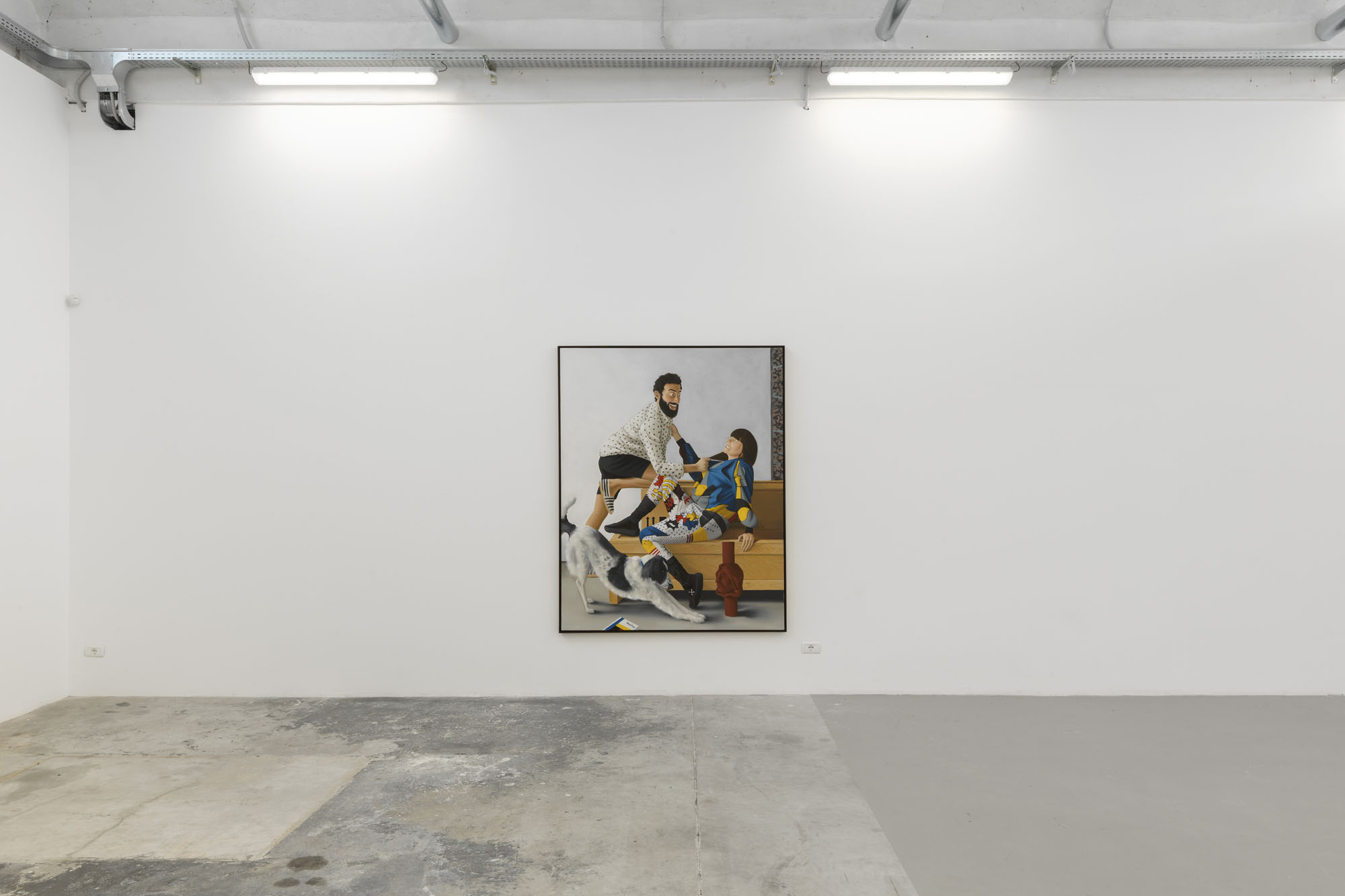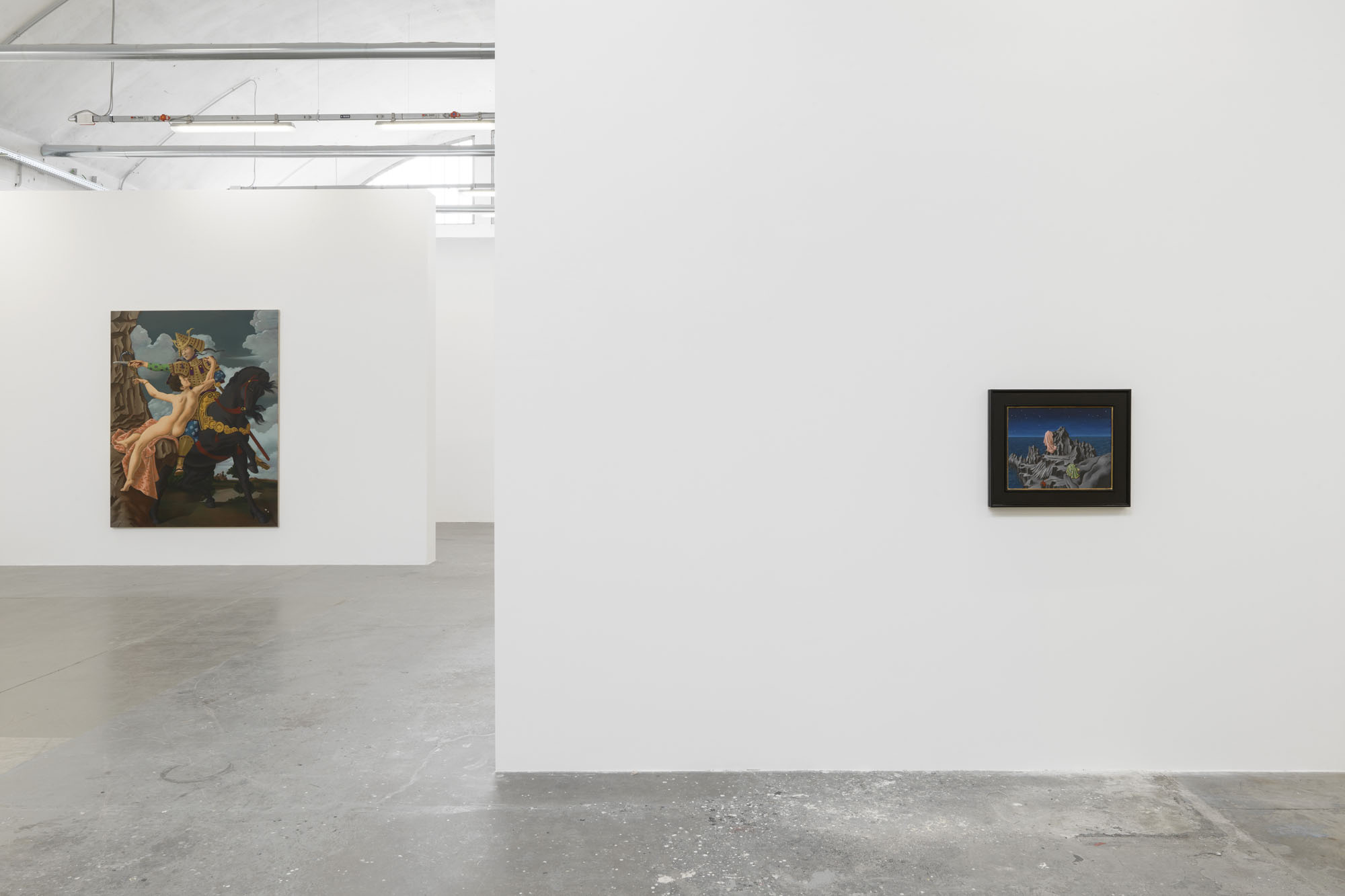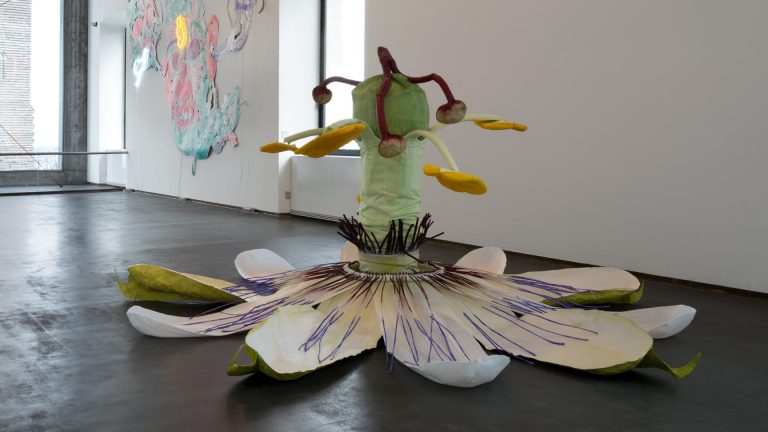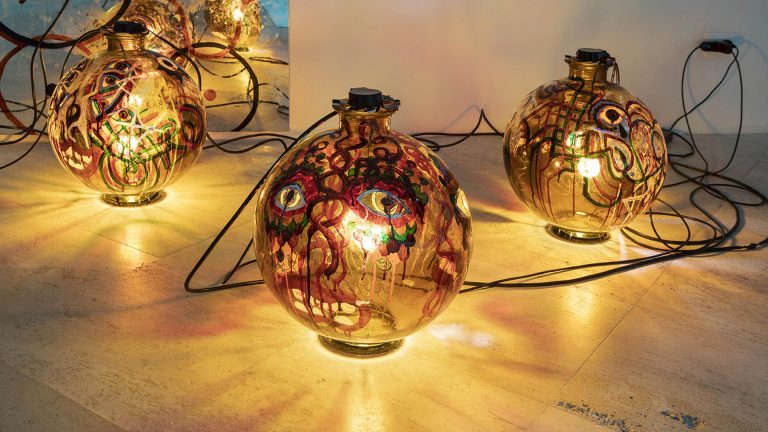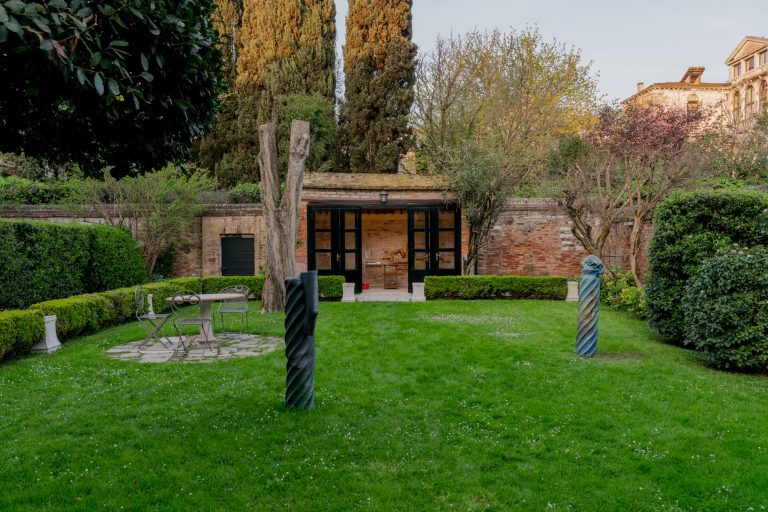Artist: Patrizio Di Massimo
Venue: KURA., Milan, Italy
Date: September 25 – November 20, 2019
Photography: All images copyright and courtesy of the artist and KURA.
KURA. is pleased to present the first solo exhibition in Milan by the Italian artist Patrizio Di Massimo (born in 1983, lives and works in London): a body of new works which further explores on a larger scale many themes dear to the artist.
Patrizio Di Massimo sets up a vocabulary with endless combinations of information and references: from Renaissance painting, through Mannerism and the late ninete-enth century French artists, to the icons of contemporary photography, to uniden-tified images found on the web, to an archive of personal drawings and photographs.
The artist works at an ever-present space-time junction, creating an imaginary wor-ld in which if he anachronistically seems to draw on a past tradition, he actually makes an ancient language current, bringing it back to our time, instilling new energy and a new vision into it with images relating to the personal and the uni-versal, to the public and the private.
Images that have the challenging appeal of an advertisement, with their firm tone, vibrant colors, plentiful details, movement, story-telling.
Clad in clever irony and classic elegance, Patrizio Di Massimo’s paintings become paraphrases of a much larger world in which the artist includes friends, family, acquaintances and people close to him. His characters take shape, move, leave the studio and the mind of the artist to confront the real world – no longer a plain representation of themselves, but main actors and presences, the interpreters of their own life and defined identities. Masculine and feminine merge in the artist’s practice, and the so-called “gender roles” are constantly redefined, questioned and recoded.
The artist therefore represents himself, his self-portrait, in a multitude of wor-ks and in a continuous externalization of himself, aimed at a process of constant identity validation.
The self-portrait that welcomes the viewer, Self-portrait as abstract painter (after Annie Leibovitz), sees the artist ironically mimicking the American actor Steve Martin in front of a work by Franz Kline, a photograph made in 1981 for the cover of Rolling Stone and a pop expression of the cult of personality. A self-por-trait as an icon acts as a perfect counterpart to the more intimate representation of the self, no longer in first person but reflected in his daughter’s eyes. Diana (6 months) reciprocates her father’s gaze in wonder, as if in a conversation to find out about each other.
Prussian Love and Bauhau continue the “quarrel series” which the artist started in 2018. The dynamics within a couple’s relationships are metaphorically represen-ted by Alan Prada and Fabio Cherstich and by Goshka Macuga and Nabil Bouhir. Two distinct and contrasting environments, a luxurious brocade room and an artist’s studio, act as backdrops for the bodies in their clashing for emotional survival. Another couple, in this case two women, intertwines in the subversion of the typi-cal representation of a medieval theme, the damsel-in-distress saved by the knight. Epico Cavalleresco (After Joseph Paul Blanc) [Knightly Epic (After Joseph Paul Blanc)] updates a scene etched in the patriarchal collective memory, in this case the story of Ruggiero and Angelica as painted by Joseph Paul Blanc in the second half of the nineteenth century.
Patrizio Di Massimo, 2019, exhibition view, KURA., Milan
Patrizio Di Massimo, 2019, exhibition view, KURA., Milan
Patrizio Di Massimo, 2019, exhibition view, KURA., Milan
Patrizio Di Massimo, 2019, exhibition view, KURA., Milan
Patrizio Di Massimo, 2019, exhibition view, KURA., Milan
Patrizio Di Massimo, 2019, exhibition view, KURA., Milan
Patrizio Di Massimo, 2019, exhibition view, KURA., Milan
Patrizio Di Massimo, 2019, exhibition view, KURA., Milan
Patrizio Di Massimo, 2019, exhibition view, KURA., Milan
Patrizio Di Massimo, 2019, exhibition view, KURA., Milan
Patrizio Di Massimo, 2019, exhibition view, KURA., Milan
Patrizio Di Massimo, 2019, exhibition view, KURA., Milan
Patrizio Di Massimo, 2019, exhibition view, KURA., Milan
Patrizio Di Massimo, 2019, exhibition view, KURA., Milan
Patrizio Di Massimo, 2019, exhibition view, KURA., Milan
Patrizio Di Massimo, 2019, exhibition view, KURA., Milan
Patrizio Di Massimo, 2019, exhibition view, KURA., Milan
Patrizio Di Massimo, 2019, exhibition view, KURA., Milan
Patrizio Di Massimo, Self portrait as abstract painter (after Annie Leibovitz), 2019, oil on linen, wooden frame, Ph. Andrea Rossetti, Courtesy the artist, ChertLüdde, Berlin and T293, Rome
Patrizio Di Massimo, Diana (6 months), 2019, oil on linen, wooden frame with golden front, Ph. Andrea Rossetti, Courtesy the artist, ChertLüdde, Berlin and T293, Rome
Patrizio Di Massimo, Prussian Love, 2019, oil on linen, wooden frame, Ph. Andrea Rossetti, Courtesy the artist, ChertLüdde, Berlin and T293, Rome
Patrizio Di Massimo, Epico Cavalleresco (after Joseph Paul Blanc), 2019, oil on linen, Ph. Andrea Rossetti, Courtesy the artist, ChertLüdde, Berlin and T293, Rome
Patrizio Di Massimo, Bauhau, 2019, oil on linen, wooden frame, Ph. Andrea Rossetti, Courtesy the artist, ChertLüdde, Berlin and T293, Rome
Patrizio Di Massimo, Untitled (Green Triptych), 2019, oil on linen, wooden frame with golden front, Ph. Andrea Rossetti, Courtesy the artist, ChertLüdde, Berlin and T293, Rome
Patrizio Di Massimo, Untitled (Green Triptych), 2019, oil on linen, wooden frame with golden front, Ph. Andrea Rossetti, Courtesy the artist, ChertLüdde, Berlin and T293, Rome
Patrizio Di Massimo, Untitled (Green Triptych), 2019, oil on linen, wooden frame with golden front, Ph. Andrea Rossetti, Courtesy the artist, ChertLüdde, Berlin and T293, Rome
Patrizio Di Massimo, Untitled (Green Triptych), 2019, oil on linen, wooden frame with golden front, Ph. Andrea Rossetti, Courtesy the artist, ChertLüdde, Berlin and T293, Rome
Patrizio Di Massimo, Luna, 2019, oil on linen, wooden frame with golden bleed, Ph. Andrea Rossetti, Courtesy the artist, ChertLüdde, Berlin and T293, Rome









